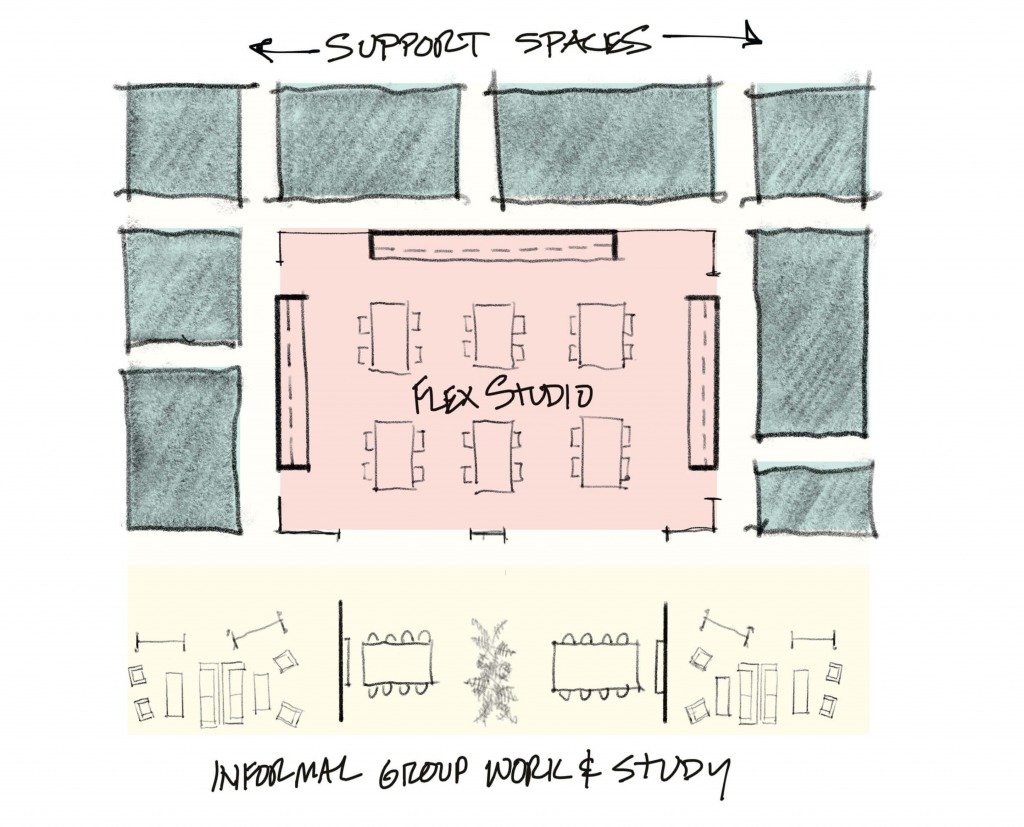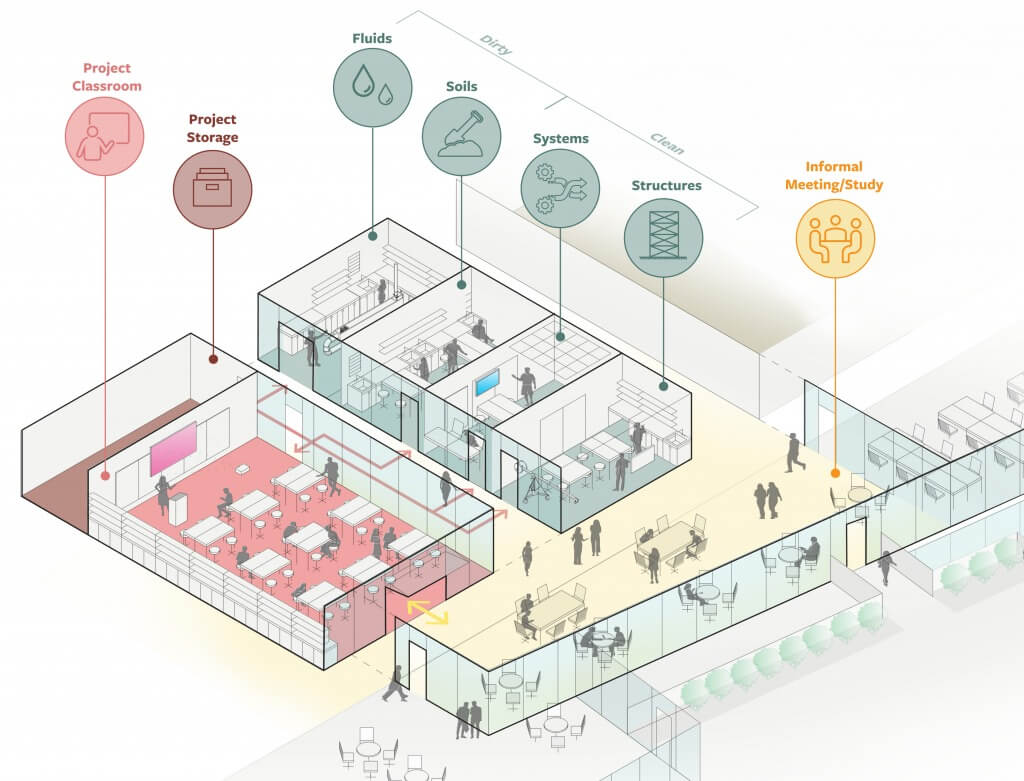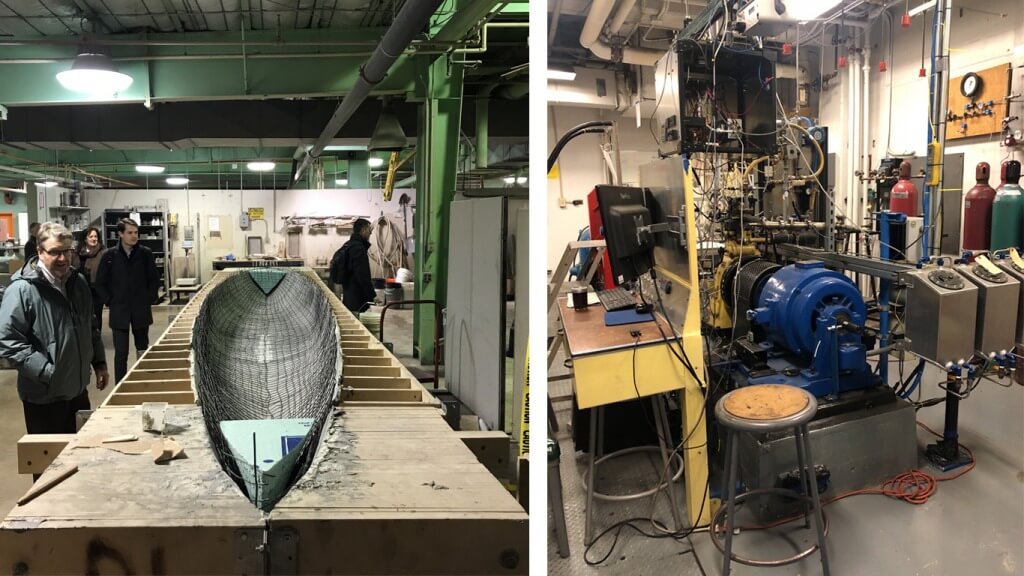PAYETTE is designing buildings for a wide range of engineering programs–from small liberal arts institutions with new minors and concentrations in engineering, to prestigious state universities with diverse undergraduate programs and large research portfolios supporting graduate and doctoral candidates in engineering. Teamwork, technology and tinkering are fundamental aspects of an engineer’s education. The need for flexible learning spaces that can accommodate everything from scheduled instruction to unscheduled project collaboration along with co-curricular work is universal to institutions large and small. Similarly, these institutions seek space-efficient solutions that maximize sharing and collaboration, and minimize the need to build custom spaces.

Concept sketch showing unique support spaces surrounding a flexible learning studio or active learning classroom space.

Concept for Mechanical Engineering program.
One approach to ensuring space remains flexible is to separate the unique and special instruments or tools into a series of support spaces, and keep the remaining space simple, flexible and open–like a design studio. We find this approach to be appealing to colleges and universities at either end of the engineering spectrum. Support spaces are accessed by groups of students who rotate through the room during class time and may return to complete a project after class. The size and organization of these rooms depends on many factors such as equipment size, noise, cleanliness, safety and training requirements.

Concept for Civil and Environmental Engineering program.
When staffed properly, this separation of instrumentation and equipment from scheduled teaching studios makes the resources accessible during and after class time. Like workshops, the support spaces function as a place for students to muck about. An undergraduate in mechanical engineering may spend their junior and senior years in a series of project-based engineering design classes culminating in a capstone project. Any free time might be spent on a competition team like the Solar Vehicle Team or pursuing an aerospace minor.
Engineers graduate with skills that equip them to investigate a diverse range of issues from water purification to resilient infrastructure and robotic systems. A cluster of support spaces may range from CNC milling to UAV testing areas to support everything needed to plan, build, test and refine an idea.

Support space uses could include club space for the concrete canoe team (left) or engine test stands (right) to support Formula SAE teams.
Our classroom utilization and forecasting capacity enables us to plan space to meet future enrollments and scale this solution to meet future needs. The overall footprint of the new space is often smaller than legacy engineering spaces where infrequently used equipment often dominates a corridor or limits the use of a room. These space-efficient solutions afford opportunities to surround the instructional cluster with presentation, collaboration and study spaces. Transparency, large openings and views into fabrication and learning spaces makes it feel like a high-tech neighborhood where the next generation of ideas and leaders in engineering are forged.


